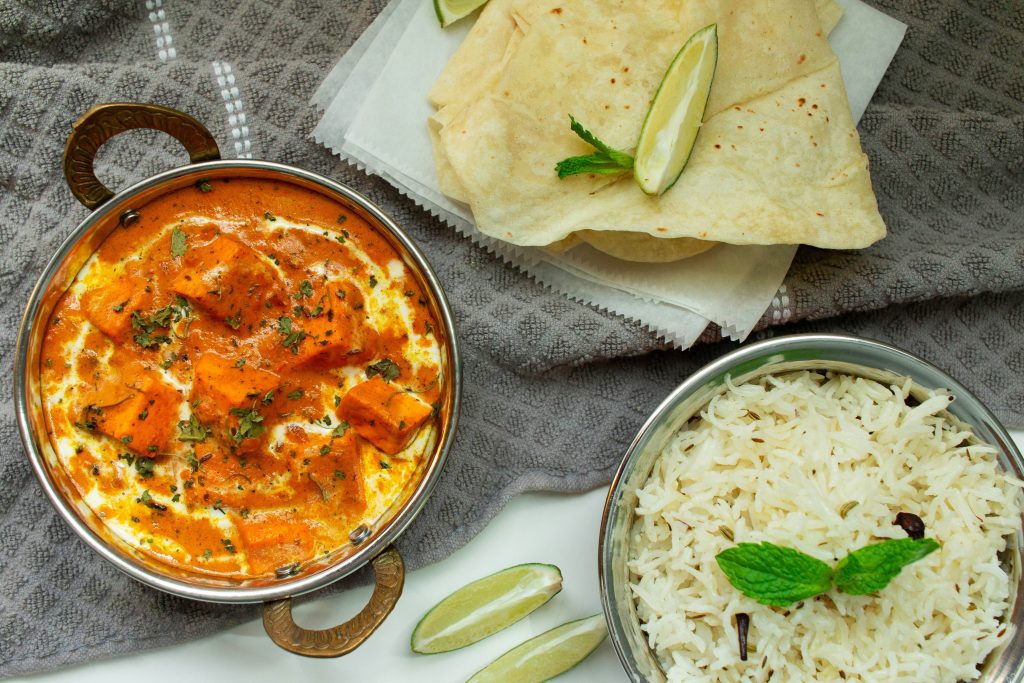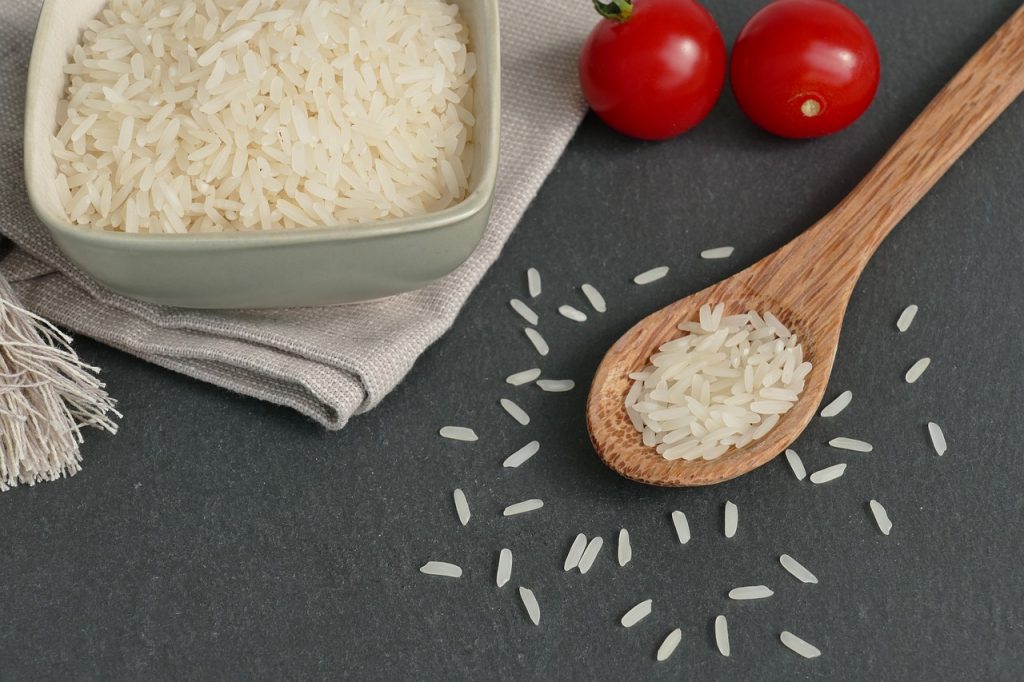Learn about Nutritional Benefits of Basmati Rice. Discover the unique qualities of basmati rice long-grain, aromatic, and fluffy. Perfect for dishes like biryani and pilaf, it adds a nutty flavor and healthy texture to global cuisines.
Introduction
Basmati rice is a certain type of rice which has long grains of rice. Such flavored and aromatic rice has a soft taste whatever makes it different. Cultivated primarily Communicative and Pakistani, it is worth living in an Indian context, especially in this region which has more cuisine diversity such as biryanis and pilavs along with other dishes from the Middle Eastern and Persian Indian sub-continent. Basmati as a term is derived from the Hindi word basmti meaning fragrant, which in a way is more than an appropriate word since rice is fragrant with a very nutty kind of aroma. It has been observed that this kind of rice has a lower GI index than most other rice varieties, which is why it is the best imparity for everyone to have blood sugar levels in check.
When basmati rice is prepared, the texture is light and flaky as moisture is almost nonexistent and the rice remains nonsticky, well separated at the end, giving a wonderful finish to the dish. Basmati rice is long and short-grain white or brown rice with health-beneficial elements such as fiber, magnesium, and B vitamins, encouraging eating healthy.

What is Basmati Rice?
Basmati rice is another grain variety of rice that is scented and elongated grain and has a hint of sweetness. Believed to be the best rice in the world, this rice variety is used in many peoples’ cuisines and has interesting historical perspectives, especially in southern Asia and the Middle East regions. The word ‘basmati’ is derived from a Sanskrit word meaning ‘fragrant’ and that is quite appropriate as far as this rice species is concerned because it is highly aromatic.
History and Origins of Basmati Rice
Basmati rice is known to have spent long. During its hundreds of years of existence, basmati rice can be traced from the rich and expansive Indian subcontinent which is historically known to originate from the Punjab region of India and Pakistan. In the past, it was found mostly in the foothills of the Himalayas where conditions cool and favorable sandy soils grow the best basmati rice. In recent times, however, basmati has invaded the kitchens of the Middle East and Persian as well as South Asian countries which has led to its high demand as an export.
Characteristics of Basmati Rice
Basmati rice stands out due to several distinct characteristics:
- Aromatic Profile: The delicate fragrances are slightly popcorn or pandan-like in scent for which Basmati is known. This distinctive fragrance is due to a compound known as 2-acetyl-1-pyrroline which gives its fragrance to Basmati rice in more concentration as compared to other types of rice.
- Long, Slender Grains: In contrast to the majority of the other known rice varieties, Basmati rice cultivars are long and slender shaped and even elongate more when cooked. This elongation coupled with the fluffiness that Basmati rice normally acquires when cooked renders it very attractive when served on a plate.
- Distinct Flavor and Texture: Basmati rice has a mild nutty taste and soft texture although quite hard which makes it a great ingredient in several types of meals. The grains remain distinct and light when cooked; this quality adds to the aesthetic and tactile pleasure provided by foods such as biryanis and pilafs.
Nutritional Benefits of Basmati Rice
Basmati rice is packed with nutrition and is health-wise the best alternative for anyone who would want to consume rice.
- Low Glycemic Index: Basmati rice has been noted for having both a low glycaemic index and glycaemic load with respects also to the legumes. This means that the intake of basmati rice would cause an increase in blood sugar levels, but such an increase would be gradual. Such attributes make it fit for people who are undergoing efforts to maintain their blood sugar levels within a desirable range.
- Rich in Fiber: Most notably, brown basmati rice is rich in insoluble fiber, which not only facilitates gut health but also helps keep one feeling full for extended periods of time. Fiber is moreover effective when it comes to keeping the heart healthy.
- Nutrient-Rich: Basmati rice has additional important minerals such as magnesium, phosphorus, thiamine, and niacin, which are in the category of B vitamins. These help in production activities, controlling the nerves and muscle health.
Types of Basmati Rice
There are principally two classes of basmati rice which include white basmati and brown basmati. These two varieties have different characteristics and spice attributes and their health contributions.
- White Basmati: This is the variety that has gained more fame, where the husk, hull, bran, and germ have been removed. This kind of white basmati rice is softer in texture and has a milder taste therefore it is mostly used in cuisines where a soft and bland flavor is preferred.
- Brown Basmati: the brown basmati rice retains the bran layer, it is not polished white rice where the utmost of the nutrients are removed. It is also widely known that it is very fulfilling and has a pronounced flavor in contrast to white basmati rice. It has high fiber contents which helps one maintain good digestive health and sustainable energy levels for a longer period of time.
How to Cook Basmati Rice
Preparing basmati rice takes time and effort to maintain the length of its grains and achieve the desired feel. Init, provided is an easy recipe to cook perfect basmati rice.
Rinse the Rice
Rinsing basmati rice under running cold water helps the rice not to become sticky as it removes the extra starch usually deposited on the surface. Therefore, rinse the rice several times until such a time that, the water is no longer cloudy but clear. This is an important step as it will help to make sure that the rice grains are not sticky and they are fluffy giving the overall texture a nice improvement.
Soak the Rice
When basmati rice is soaked in water for twenty to thirty, the soaking period makes the edible parts of the rice fill with water giving it a longer grain when it is cooked. This helps the rice to fluff up while retaining its structure without being dense as if it has been heavily packed together which complements many types of cuisines.

Boil and Simmer
Use a rice-to-water ratio of 1: 1.5-2. Take the boiling water add the rice and re-cover, reduce heat, and simmer. Cook for 15-20 minutes and once again check if the water has all been absorbed. Here, a cover does not mean full release of heat control by the hot box. So, the rice cooks under very low heat and is tampered with only; jerked forward at intervals where necessary.
Fluff and Serve
When the cooking time is up, take a fork and scratch the rice lightly to separate the grains and create air in the dish. This helps in spreading the rice without creating patches. Serve immediately to retain heat, however, allow some cooling when serving with grain for salad and other dishes to avoid breaking the grain structure.
Popular Dishes Using Basmati Rice
Basmati rice is a staple in many culinary traditions around the globe. Here are a few examples:
1. Biryani
Biryani A traditional rice preparation, Biryani consists of layers of marinated meat (chicken, lamb, fish, etc.) and basmati rice, cooked along with vegetables and flavored with spices like saffron, cardamom, and cumin. It is very common to combine the preparation of the biryani dish with baking so that the ingredients intermingle for a long time, in which case the dish is extremely enjoyable and usually decorated with fried onions, fresh greens, and sometimes nuts, which are always a treat for the eyes.
2. Pilaf
Pilaf A rice pilaf is a rice dish in which basmati rice is boiled in a broth along with bay leaves, cloves, and cinnamon. Pilaf can sometimes contain vegetables or meat, but the dish soaks up water such that it remains dry and fluffy. This dish may be served as a main course or alongside other main dishes.
3. Persian Rice (Tahdig)
Persian restaurant offers assorted kabobs with tender basmati rice, well known for its crispy yet flaky bottom layer named tahdig. Persian cuisine features rice, which has a soft bumpy layer and a crisp, caramelized layer at the bottom. The rice is usually served with all types of meat, stews, and green herbs, making it different yet very delectable.
Basmati Rice in Global Cuisines
Basmati rice, though initially cultivated in the Indian subcontinent, has spread its wings and reached many countries across the globe, especially in the Middle East and Persian cuisines. Its scent is pleasing and useful as it can take on many components, making it a fundamental course in many cultures that include prepared Indian food, Middle Eastern food with lamb, and contemporary food with fusion tendencies.

FAQs
How is basmati rice different from regular rice?
Basmati rice incorporates long grains, a pleasant smell, and fluffed characteristics that distinguish it from normal rice. When cooked, it remains, light and fluffy unlike the varieties of rice that are sticky. Moreover, basmati rice is known for having a low glycemic index as compared to several other types of rice, hence can be regarded as quite safe for blood sugar control without compromising on taste.
Why is basmati rice often soaked before cooking?
Soaking basmati rice for 20-30 minutes before cooking helps the rice get water in it thus producing long fluffy white rice when done. This also shortens the period taken to cook the rice and even helps in cooking the rice evenly. Soaking is very effective in these types of dishes, especially in biryani, where it is important to achieve fluffy and separate, yet soft grains because it improves the overall picture of the dish and texture.
Is basmati rice healthy?
Of course, I believe basmati rice has more health benefits than that. The brown basmati, in particular, contains more fiber. It is the better type of rice because it is the lowest on the glycemic index. In addition to this, it also contains micronutrients and dietary fiber, which are necessary for good bowel movement, hence it is easy and healthy to incorporate basmati rice into the meals.
Can basmati rice be used in any recipe?
Basmati rice is often referred to as an all-purpose rice. However, it is suited for the cooking of dry dishes such as biriyani, and pilau and also in Middle Eastern cooking where the rice needs to be separate and fluffy. This is because while many dishes appreciate basmati rice as a great accompanying element, it is not ideal for recipes like sushi or risottos which motivation is such textures due consideration for the correct outcome.
Is basmati rice gluten-free?
Yes, basmati rice does not contain gluten, meaning people suffering from celiac disease or anyone gluten intolerant don’t have to worry. It has an interesting taste and can be used in meals with different dietary requirements as a healthy carbohydrate-rich source that does not contain gluten and is properly situated within the meals designed in different regions.
Conclusion
Basmati rice is a worldwide cuisine favorite for its beautiful aroma, lengthy grains, and pleasant history. There is a positive response to it not only because of the unique sensory properties but also due to the health benefits that it offers especially the brown form of the rice. Be it served plainly as a side dish or used in the more complex recipes where it takes center stage, basmati rice always adds sophistication and taste to any meal.
